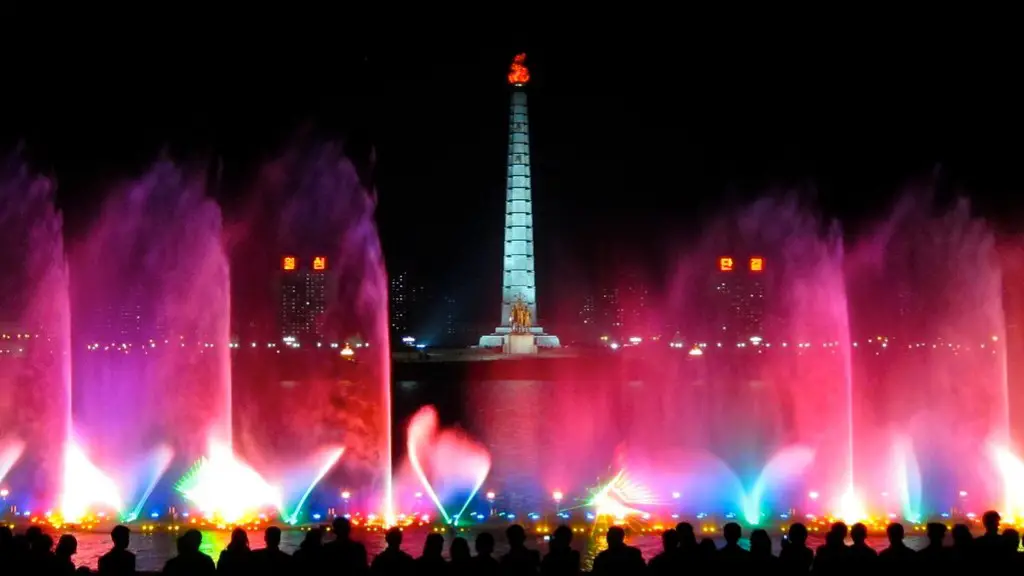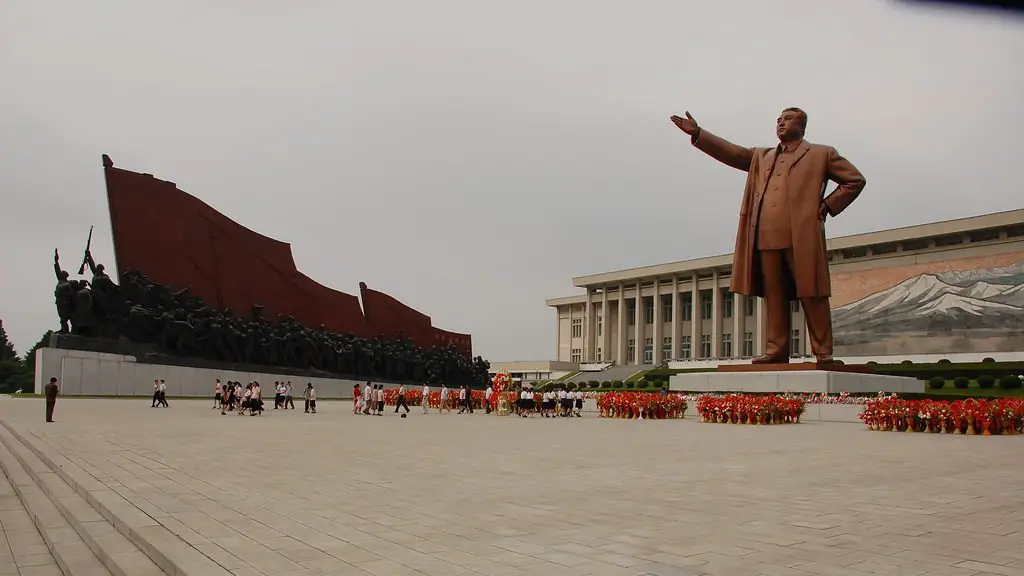Evolving Relations between Korean Peninsulas
North Korea and South Korea have been two different states with distinct boundaries since 1945.The two are divided by a heavily guarded area known as the Korean Demilitarized Zone.The distance between the two countries is greater than just the physical geography,as history,identity,culture and nearly every aspect of their societies have drifted apart at an incredible pace since then.
According to estimates from the Centers for Disease Control and Prevention,the total population of North and South Korea combined is more than 55 million,with a median age of about 40 years old.South Korea has the 15th-largest economy in the world,with a GDP of more than $1.3 trillion,according to 2019 estimates.North Korea has the 81st-largest economy in the world,with a GDP of just $41 billion.
The modern division of Korea began after World War II and the division of the peninsula into Soviet and American occupation zones.The North was heavily influenced by Communism and Russia while the South was heavily influenced by Democracy and the United States.When Japan was defeated in 1945,Russia occupied the industrial heart of North Korea while the United States occupied the South.This began to create two separate governments and two different ideologies.
The division of Korea resulted in the Korean War which lasted from 1950 to 1953.The war resulted in a stalemate and the two sides have been effectively separate ever since.Despite efforts from both sides to try to reunify,the division remains to this day.The two countries have gone in drastically different directions since 1953.
South Korea has grown to become a major economic power in the region and the world,while North Korea has become an isolated nation with its own unique ideology. South Korea has embraced democracy,economic freedom and consumerism,while North Korea has chosen to remain a secretive nation with a strictly controlled economy.
Today,while there are still hopes of reunification,the two countries remain separate and divided.The two sides have been able to make small steps towards better relations,such as the reopening of the Kaesong Industrial Complex in 2018,but the two countries remain far apart.
Roots of Conflict
The history of the Korean Peninsula is tied to the struggle between different powers in East Asia.In the late 19th century,Korea was a protectorate of Japan and became its formal colony in 1910.During World War II,Japan was driven from the Korean Peninsula by the Allied forces,which split the peninsula into two occupation zones under the influence of the United States and the Soviet Union.In 1948,North and South Korea were formally established as separate nations,with the Soviet-backed North more economically developed than the U.S.-backed South.
The Korean War broke out in 1950 as a civil war between the two states.The conflict ended in an armistice in 1953,with the two sides exchanging prisoners and establishing the Korean Demilitarized Zone as a buffer between them.Since then,though tensions have waxed and waned,Korea has remained a divided country.
Koreans on both sides of the DMZ have distinct cultures,histories,and institutions.Each side has followed its own path since 1953,with the North retaining a dynastic dictatorship and tightly controlled economy while the South has become a prosperous democracy and a major global economy.
The history of the modern division of the Korean Peninsula is directly linked to the Cold War machinations of the United States and the Soviet Union.Of course,Korea had long been a divided and contested region in the region,but the division between North and South was cemented in the 1950s and persists to this day.
Explore Reunification Prospects
The idea of reunification has been discussed for decades,but it remains a distant dream.The two sides have vastly different economic and political systems and have grown far apart since 1953.Reunification would likely require extensive reforms in North Korea for it to be economically and politically viable.It would also require a tremendous amount of economic and financial support from the international community.
Recent years have seen small steps towards improved relations between the two sides,such as the reopening of the Kaesong Industrial Complex in 2018.This has been seen as a symbol of the potential for reunification,though in practice the two sides remain far apart. A summit between the two sides in 2018 resulted in a joint declaration which,among other things,called for closer ties between the two countries.
The two Koreas appear to be far from reunifying,but there is still hope that they can eventually come together as one nation.The level of economic,political,and social ties between the two sides has grown in recent years,which could lead to further breakthroughs in the future.It may seem like a distant dream,but reunification is still possible.
Understanding Core Differences between the Sides
The north and south have wide-ranging differences between them when it comes to how their respective societies function and interact with the external world.North Korea has a totalitarian regime, which is known for its repressive policies toward its citizens and the limited access to outside world. It is also an isolated nation in the international community, and its activities are restricted or banned by major powers including the United Nations.
Meanwhile,South Korea is a democratic and liberal society,which gives a high level of personal freedoms to its citizens.The country also maintains diplomatic relations with various countries and its economy is integrated with the world. South Korean companies that have global presence,such as Samsung,Hyundai, and LG have brought a good deal of fame and wealth to the country.
The core differences between the two countries lie in their economic and political structures.North Korea has an authoritarian government which brooks little dissent from within the country and is immensely suspicious of the outside world.South Korea,on the other hand,has embraced democracy,economic freedom,and consumerism in recent years and is an important member of the international community.
Implications of Relations between the Sides
The relations between the two Koreas have wider implications for the entire region.The two sides have largely maintained the ceasefire that ended the war,but there is still an underlying tension.The potential for conflict is always present and a breakdown in relations could lead to a return to hostilities.
Efforts to improve relations between the two sides are of paramount importance to stability in the region.Improved relations could lead to a more cooperative and prosperous future for both sides.The Kaesong Industrial Complex is an example of the possibilities of cooperation between the two sides.The hope is that further cooperation can be achieved in the future,which would benefit both sides and the region as a whole.
The issue of reunification is also deeply important.Peaceful reunification would be hugely beneficial for both sides,but it remains a distant dream at this time.The two sides have gone in drastically different directions since 1953,and the challenges of reunification appear to be too great for now.Still,reunification remains an important goal that both sides will continue to strive for.
Changing Narrative Surrounding North Korea
North Korea has been widely portrayed in the media and in the public imagination as a highly repressive and dangerous country.While this portrayal is not entirely wrong,it overlooks the aspects of North Korea that the country is willing to show to the world. North Korea has become more open in recent years,giving foreign journalists and tourists limited access to the country and even allowing some international companies to operate in the country.
The changing narrative surrounding North Korea also reflects the changing relationship between the two countries.Recent efforts such as the Kaesong Industrial Complex and the summit between the two sides in 2018 show that the two countries are willing to work together on certain issues, though there is still a long way to go to improve relations.
The media continues to portray North Korea in a largely negative light,as a pariah state with a goal of expansion and domination,but this overlooks the more collaborative and cooperative aspects of their relationship.The reality is that there are still major differences between the two sides,but small steps have been made to bridge the divide.
Regional Impact of the Two Sides
The two Koreas remain important players in the region and their relations with each other can have an impact beyond the peninsula.A breakdown in relations can lead to an increase in tensions in the region and lead to further conflict.A peace treaty between the two sides could lead to increased cooperation in the region and could potentially lead to wider security benefits.
South Korea’s success in becoming a prosperous democracy has had a positive influence on the region.It has demonstrated that economic and political freedom are possible,which has served as an inspiration to many countries in the region.South Korea is also an important ally of the United States,which contributes to regional stability.
North Korea,on the other hand,remains a source of instability and tension in the region.It is a highly militarized nation and its nuclear ambitions remain a source of worry for many countries in the region. Its diplomatic isolation and economic struggles also hamper its ability to work with other countries in the region.
The two Koreas remain a major source of tension and uncertainty in the region,but there is also potential for cooperation in the future.The two sides have made small steps towards better relations in recent years,though there is still a long way to go to improve their relationship.The potential for further peace and cooperation is real,though the challenges are immense.
Conclusion
The divide between North and South Korea is vast and goes far beyond just physical geography.The two sides have gone in vastly different directions since 1953,but there are still hopes of reunification.Recent years have seen small steps towards improved relations,though it remains to be seen if this will lead to further breakthroughs in the future.Their relations also have a major impact on the region,and a breakdown in relations could lead to further conflict.The two Koreas remain a major source of tension in the region,but there is potential for further peace and cooperation in the future.





